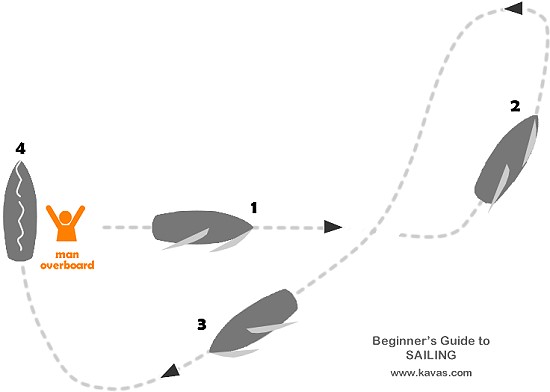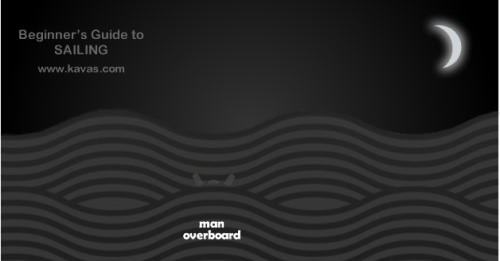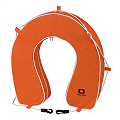Man overboard
Possibly the worst thing you will hear in a typical sailing career. Everyone needs to switch on and get the person out of the water as soon as possible.
Man Overboard
In the event of a man overboard (MOB) situation while sailing with open sails, the crew must act swiftly and efficiently to ensure the safety and well-being of the person in the water.
Man overboard incidents can happen unexpectedly, and a well-practiced response is crucial for a successful rescue.
Essential steps the crew should take
Below are the essential steps the sailing crew should take when faced with a man overboard situation.
- Immediate Alert and Spotter Assignment:
Any crew member spotting someone overboard must promptly and loudly shout "Man Overboard!"
Keep a constant eye on the person in the water, providing reassurance and guidance until they are safely back on board. - Throw a Floatation Device:
Immediately throw a floatation device such as a lifebuoy or a horseshoe buoy towards the person in the water. - Initiate the MOB Recovery Maneuver:
Turn the boat into the wind by tacking or gybing, depending on wind direction, to stop the boat and make it easier to retrieve the person in the water.

Immediate First Aid Care
Following a man overboard rescue, it is crucial to promptly administer first aid to address any injuries or shock the individual may have experienced.
Avoiding a "Man Overboard" situation
Here are some tips to help prevent such incidents:
- Skipper's Briefing:
The skipper plays a crucial role in ensuring crew awareness regarding man overboard situations.
During the Skipper's Briefing, role assignments should be provided, clearly defining responsibilities related to man overboard incidents. - Secure Footing:
Encourage crew members to maintain secure footing and use handholds when moving around the boat, especially in challenging weather conditions. - Life Lines and Safety Nets:
Install and use lifelines and safety nets around the perimeter of the boat to provide an additional barrier against falling overboard. - Wear Safety Gear:
Make it a rule for all crew members to wear appropriate safety gear, including life jackets and harnesses, especially in rough weather. - Keep the deck clear of unnecessary clutter and equipment to reduce the risk of tripping hazards.
- Training and Drills: Conduct regular man overboard drills to ensure that the crew is familiar with the proper procedures for responding to such emergencies.
Night Sailing

In addition to the aforementioned measures for preventing man overboard incidents, it's crucial to highlight the risks associated with sailing during the night.
Night sailing introduces low visibility conditions, making it inherently more challenging to detect potential hazards, including a person falling overboard.
To mitigate these risks, consider avoiding night travel when possible, especially in unfamiliar or busy waters.
If night sailing is unavoidable, ensure that all safety measures are heightened, including increased lookout duties, well-lit decks, and strict adherence to safety protocols.
Moreover, encourage the use of personal safety gear with reflective elements for all crew members during nighttime operations.
By exercising caution and emphasizing heightened safety measures during night passages, the crew can further reduce the likelihood of man overboard incidents.
A Real Sea Rescue
Happened last summer:
As the group enjoyed the sea, Anna went to retrieve her towel.
Unexpectedly, she stumbled due to the instability caused by the waves.
Without panicking, the skipper skillfully maneuvered the boat in a figure-eight pattern.
Bringing the vessel alongside her, they threw a rope, providing her a way to return to the safety of the boat.
 However, the crew faced a challenge. While successfully rescuing Anna, they realized that immediate deployment of a "horseshoe" lifebuoy would have been even more effective.
However, the crew faced a challenge. While successfully rescuing Anna, they realized that immediate deployment of a "horseshoe" lifebuoy would have been even more effective.
It was a crucial detail that would have ensured instant protection and unfortunately went overlooked.
In addition to the critical oversight during the rescue, another notable mistake on this bareboat charter was the absence of a comprehensive briefing by the Skipper, at the beginning of the trip.
This absence underscored the importance of proper preparation and communication before setting sail.

